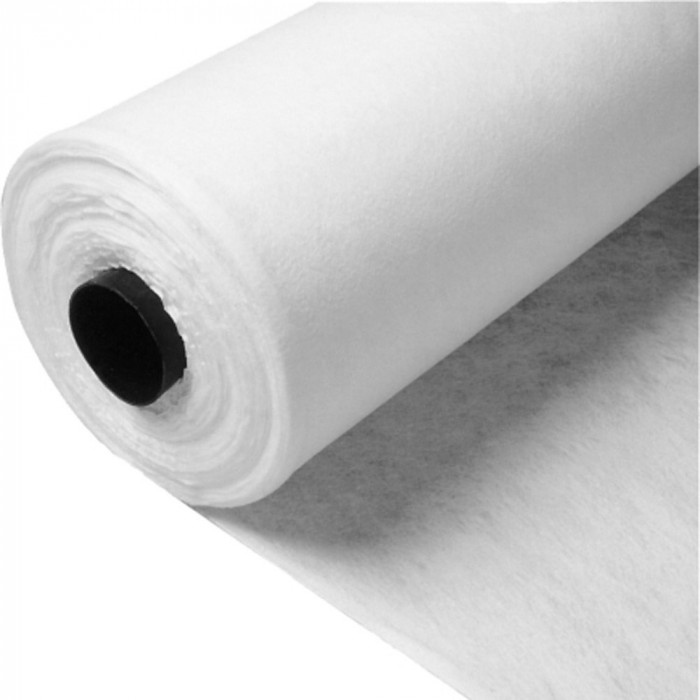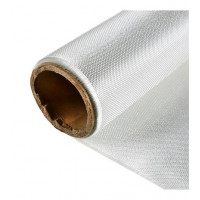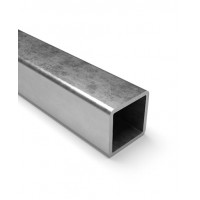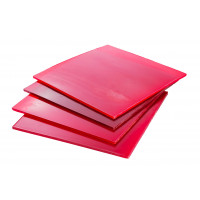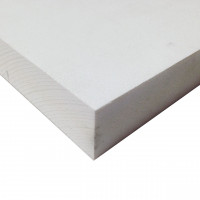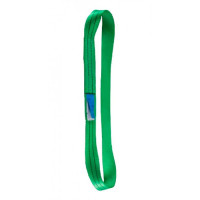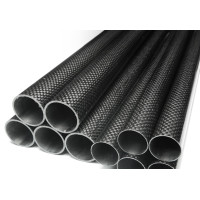Geotextile 400 is a non-woven needle-punched material made from polyester fiber. The material is neutral to aggressive environments, non-toxic, environmentally friendly, resistant to ultraviolet radiation, microorganisms, bacteria, acids, alkalis, temperature changes, and does not form decomposition by-products.
SURFACE DENSITY g/m2 100+/-9%
Breaking load of the strip (50 × 100 mm) in the longitudinal direction H, not less than 110
Breaking load of the strip (50 × 100 mm) in the transverse direction H, not less than 130
Elongation at break,%, no more than length 130
Thickness, mm 1.2
Canvas width, m 2
Winding, m 175
Minimum quantity, m 350 (roll)
Geotextile (English geotextile) - one of the types of geosynthetics; geofabric (woven fabric), as well as non-woven fabric, made by needle-punched, thermally bonded (calendering) or hydro-bonded [source not specified 4349 days] methods from polypropylene and/or polyester threads - from one endless thread (monofilament), or from scraps 2.5 -10 cm (staple). Blended fibers imply the inclusion of wool blend or cotton threads.[1]
A woven type of geotextile is a geotextile made from glass or polyester fibers. Geotextile is characterized by a breaking load of up to 2200 kN/m² (reinforcing woven geotextile made of polyester threads). When making it from fibers, threads with a thickness of 1-3 microns are first formed, from which the fabric is then made.
It is used in construction and geotechnics, agriculture, medicine, and household appliances. Used in the manufacture of furniture, packaging, clothing, hygiene products.
In construction, the highest quality geotextiles were considered to be those produced by the needle-punched method from 100% polypropylene thread [source not specified 4370 days], until the needles were replaced with thin streams of water [source not specified 4349 days] under high pressure (hydrofastened geotextiles), since, unlike water needles damage monofilament. [source not specified 4349 days] Used in the construction of runways, roads and railways, building foundations, laid under paving slabs and paving stones.
Needle-punched geotextiles are used as drains and filters in addition to or instead of traditional granular materials.[3]
In medicine (disposable clothing and bed linen), thermally bonded geotextiles are used, usually two-layer or three-layer.
Hygiene products (pads, tampons, diapers, sanitary napkins, etc.) usually use medical spunbond.
In agriculture, needle-punched geotextiles are used to protect against weeds and birds, as well as as a covering material for greenhouses (instead of PE films designed for one season).
In the furniture industry (padding of upholstered furniture and mattresses) and household appliances (filters), cheap geotextiles made from polyester or mixed staple threads are usually used.
For packaging (bags for shoes, clothes, household appliances, etc.), thermally bonded geotextiles without a UV stabilizer are usually used, which is also used for winding perforated drainage pipes and making a geomembrane (as a filter).
For a long time it was believed that the main indicator of non-woven needle-punched geotextile was the surface density (g/m2). Since then, the production of geosynthetic materials has stepped far forward and, in addition to basic materials in terms of density, it has become possible to produce materials taking into account the requirements of the object.
Currently, surface density is not the main indicator for determining the suitability of a material. Moreover, if you select a material according to this indicator, you can choose a material that will not perform the necessary functionality in the project. For example, geotextiles with a density of 100 g / m2. one manufacturer will have a breaking load of 2 kN/m, and another 3.5 kN/m.
Geotextiles are produced in various designs, which may differ in their physical, technical and operational characteristics. But some qualities are inherent in all types of similar products:
The materials are highly elastic.
Geotextile evenly distributes the load from bulk materials.
The fabrics are characterized by good resistance to chemical oxidative processes.
The material perfectly prevents weeds from growing through the main coating.
High-quality laid geotextiles ensure timely drainage and perform an excellent filter function.
The materials have excellent reinforcing qualities.
These products are not susceptible to destruction under the negative influence of grains or insects.
Geotextiles are affordable and easy to use.
Geotextiles are divided into varieties according to the following criteria - material and production method, and areas of use. Therefore, it is worthwhile to dwell on each of them in detail.
Geotextile fabrics consist of thin synthetic fibers created from various materials that cant be combined in different proportions.
Depending on the dominance of one or another component in the composition of geotextiles, it is divided into the following types:
Polypropylene geotextiles are highly resistant to various external influences, have excellent filtering properties, and are highly durable.
Polyester geotextiles consist primarily of fine polyester (polyester) fibers. The material is environmentally friendly, resistant to chemical influences, elastic and quite durable.
Mixed (multicomponent) geotextiles. This type of material consists of different elements made from recycled materials - this can be waste from viscose, cotton and wool production. Mixed types of fabrics are affordable compared to the first two options, but they are inferior in durability and durability, and are also not as reliable. This is directly related to the fact that the substances that make up such geotextiles are natural, as they gradually decompose and are destroyed under the influence of external natural factors.
For example, you can find woven, knitted or non-woven geotextiles (needle-punched and thermally bonded) on sale.
Geofabric or woven geotextiles are produced in exactly the same way as ordinary fabric, that is, by complex or simple, but always “organized” weaving of threads according to a certain pattern.
Glass and polyester fibers are used to make this material. The finished fibers are additionally impregnated with reinforcing compounds and passed through calenders (special holes), where the threads are partially melted, due to which the surface of the material becomes even denser. Woven fabrics are used to separate layers when constructing paths, distributing the load on the base and strengthening structures.
Non-woven needle-punched geotextiles are made from polypropylene or polyester fibers, which are connected to each other using a needle-punched method.
This method of manufacturing the material consists of several stages, the first of which consists of the formation of a loose layer consisting of fibers of different lengths. Initially, such a layer looks like simple cotton wool, the weight of which must be evenly distributed on the surface, otherwise the fabric will have a different thickness. Then, the raw material laid out in this way must be felted, that is, compacted using needles with special notches. The needles passing through the layer of fibers intertwine them, fixing them together. This production technology will make it possible to obtain a geowoven that perfectly permeates moisture.
The most famous Russian manufacturers of this material in Russia are the Dorrnit company, which markets a material with the same name. This type of geotextile is highly resistant to high loads and mechanical stress, it has good strength and does not deform during operation.
Needle-punched geotextiles are additionally reinforced with geogrid, which increases durability and increases strength.
Needle-punched materials also include construction geotextiles.
Non-woven thermofixed geomaterial, which is also made from polyester or polypropylene, but is not subject to heat treatment. The material has a homogeneous structural structure, excellent filtering ability and high tensile strength. The canvas is resistant to moisture and chemical influences, so the material does not heat and mold does not form on it.
Thanks to the sintering of fibers during heat treatment, thermofixed geotexile receives increased strength properties without losing elasticity.
Thermally bonded geofabric is produced from molten granules of raw materials through extrusion, and then microscopic fibers are applied to its surface. Then the canvases are exposed to elevated temperatures, from which the threads melt and sinter together.
Thanks to this process, geotextiles have high mechanical strength, which makes them different from other non-woven materials. The material is used to separate bulk layers, has excellent elasticity and can withstand high loads. In Russia, this type of geotextile is produced by the Technonikol company - its products are used in various fields of construction.
Knitted geofabric with stitching. This version of the canvas is made from the same materials as the products described above. But in this case, the main fibers must be stitched using a strong thread.
The fabrics of this geotextile perfectly allow moisture to pass through, but have low resistance to mechanical stress. But they also find a worthy area of application.
It can be additionally noted that geotextiles made from polyester fibers are less resistant to mechanical stress compared to the polypropylene version of the fabrics. Therefore, when choosing a material, it is worth considering its scope of application.
Today you can find geotextiles on sale, which are produced in 2 versions - with and without strengthening impregnation. In qualityImpregnations use substances such as polymer resins with plasticizers, special components and latex, which are necessary for some areas where geotextiles are used. Essentially, the impregnated material turns into a flexible composite roll of plastic, which is reinforced with synthetic fiber.
Functionality and scope of application of geotextiles
Geotextiles are used for various needs and in various spheres of life of the owners of country houses, since its functionality makes it possible to improve the quality of structures and structures and increase garden and vegetable yields.
General capabilities of geotextiles
This material has the following functionality:
Reinforcement. Geotextiles contribute to the strengthening and strengthening of building structures, improving the bearing capacity of their foundations. The result of using this material is the uniform distribution of loads on the bulk and main soil, its preservation from erosion and subsidence.
Drainage capabilities. Geotextiles can give off water in a certain direction in a timely manner and do not allow siltation of protective sheets with layers of bulk building materials.
Defensive abilities. Layers created from geotextiles prevent undesirable soil interaction, exclude mechanical damage to waterproofing materials, slow down or eliminate erosion processes. In addition, the canvases can protect the beds from weeds, which will significantly increase the yield of cultivated plants.
Filtration. Cloths that are used in drainage systems exclude contamination of channels made from perforated pipes. In addition, the material does not allow the soil located next to the drainage channels to be washed out, as a result of which subsidence of the structure is excluded.
In our time, the areas of use of geotextiles are quite diverse, since it helps to preserve the main materials of a coating or building, as well as increase their service life.
Cloths of such a universal material are used in the repair and construction of:
tram and railway lines;
sports facilities and parking lots;
modern motorways, urban and rural roads;
supporting walls;
airport runways;
drainage systems;
when strengthening material for flower beds and garden beds in order to prevent the growth of weeds;
when constructing sites and more expensive in summer cottages.
Depending on the scope of this material, its density is selected, since the functionality of the material and the duration of the operation of the canvases and coatings under them depend on it. Density is always indicated in the marking of geotextiles.
Geotextiles in road construction
Today, conscientious construction companies build roads and repair them using modern materials and technologies.
Geotextiles can be safely attributed to those, since it is actively used to create the foundation necessary for the future route. The material makes the base durable, strong and resistant to external influences, which allows you to use roads longer without resorting to their repair.
In the construction of underground tracks, parking lots and permanently operated roads. In this case, geotextiles not only increase the bearing capacity of the road surface, but also stabilize the loads that fall on it.
In the construction of modern highways, geofabric provides road stabilization, eliminates shifts or ground squats, evenly distributing vertical loads.
During the repair and expansion of road surfaces, this material binds the old and new coating, eliminates the occurrence of cracks and subsidence of the surface.
In addition, during all types of road works, geotextile sheets are used to equip filter / drainage systems and to strengthen roadside embankments.
The use of geotextiles will be needed if the road is laid in areas with waterlogged or unstable soils, since without such a reinforcing layer, the road surface may collapse after the first test with snow or winter frosts.
The use of geotextiles allows more economical use of materials, which will not affect the bearing capacity of the roadway.
The road surface will be reliable, since the layer of crushed stone that perceives the loads will be separated by the canvas from the weak layers of the embankment. As a result, the top surface of the road will not be weakened, which will avoid its destruction and deformation.
For different types of roads, geotextiles with different densities are used:
For the construction of roads that are rarely used or intended exclusively for the passage of cars, geotextiles with a density of 250 grams / square are used. meter.
For the construction of actively operated routes for trucks and cars, geotextiles with a density of 300 g/sq. meter.
During the construction of runways at airports, heavily loaded highways and for arranging the bottom of artificial reservoirs, a geofabric withdensity from 350 g/sq.m. meter.
Material having a density of 400-450 g/sq.m. meter and above is used to strengthen runways for large heavy aircraft, strengthen various embankments and constantly busy highways.
From us you can buy Geotextile 400 at the best price in Ukraine. A wide range of products allows us to quickly and efficiently fulfill any orders, helping to complete any construction work on time.
No questions about this product, be the first and ask your question.

